Gold Starts to Come Alive After Big Pullback - Weekly Wrap Up

Did you know you can get the Sprott Money Weekly Wrap Ups, Ask The Expert,
special promotions and insightful blog posts sent right to your inbox?
Sign up to the Sprott Money Newsletter here.
It’s been a long consolidation phase in the precious metals—especially for gold. But when will we get that breakout everyone keeps expecting? Host Craig Hemke sits down with market strategist Paul Wong of Sprott, Inc. to break down all the gold and silver news you need to see what lies ahead.
In this edition of The Weekly Wrap Up, you’ll hear:
- The long-term trends in precious metals
- When to expect a gold rally
- Plus: Paul’s forecast for silver
“For the most part, we’re dramatically oversold. Probably there were a number of factors involved, and it has a lot to do with positioning and flows… So the last five years, there’s been this unrelenting flow into what I call ‘the long duration trade.’ And that’s predicated on sort of this Goldilocks economic background of ‘slowflation.’ It culminated with the big blowout in FANG names… Facebook, Amazon, Apple, Microsoft, Google. It got up to about 24% of the total S&P weight. That was one of the greatest concentrations ever in only a handful of names.”
To hear Paul’s full thoughts on this week’s gold and silver news, listen here:
Announcer: You're listening to the "Weekly Wrap-up" on "Sprott Money News."
Craig: Welcome back to the "Sprott Money News," sprottmoney.com "Weekly Wrap-up." It is Friday, April 23rd, 2021. I'm your host, Craig Hemke. As you know, Eric has been on a hiatus for a couple of months now. And he...we hope to have him back soon. In his place we've had some great guest hosts that have been happy and willing to join us. And I've got a brand new one for you this week, the gentleman's name is Paul Wong.
Paul is a market strategist for Sprott Inc. He's got more than 30 years investment industry experience, specializing in investment analysis for natural resource investments. Hey, Paul, this is great fun to get to know you. Thank you for joining me for this week's "Weekly Wrap-up."
Paul: Great. Thank you, Craig.
Craig: Hey, and most folks know, you know, we put this on multiple platforms, YouTube, and Spotify, Apple, all the rest, if you like our content, whether it's the monthly metals projections with Chris Vermeulen, or the "Ask the Expert" segment or these "Weekly Wrap-up" segments, please be sure to share, like and subscribe to whichever channel you're listening to today.
And of course, always keep Sprott Money in mind whenever you're looking for physical metal. You can call us at 888-861-0775. And of course, just go to sprottmoney.com to find out more information on precious metal and storing precious metal with us too, safely and securely.
Paul, let me just kind of dive right in here. We're at a very interesting point in the precious metals. I mean, they've been in this consolidation phase, or at least gold has in particular for the last seven months or so, pulling back farther than maybe some of us thought. Looking like we've got some life here bouncing off of some support down below 1,700. Just in a broad sense, how do you see the metals at this point?
Paul: For the most part, yeah, we were dramatically oversold. There was, say probably there was a number of factors involved, and it has a lot to do with positioning and flows. So, if I can back up quite a bit, so the last five years, there's been this, you know, unrelenting flow into what I call the long duration trade. And that's predicated on sort of this, you know, this economic...this Goldilocks economic background or slow inflation.
And so, you know, it culminated with the big, you know, big blowout in the FAANG names. So, when COVID hit, there was a huge migration of flows into what I call the long duration trade. The poster child for that would be the FAANG names, so you know, Facebook, Amazon, Apple, Microsoft, Google. It got up to about 24% of the total S&P weight. And that was, you know, one of the greatest concentrations ever in only a handful of names. Now, that was predicated on, again, the notion that we were gonna be in this very long, protracted, almost no growth environment, great high risk, etc., etc.
So, you know, you want to go into this area of secular growth. So, what's happened? So, let's back up a little bit more to about a year ago. So, central banks around the world basically launched, probably the, you know, the greatest stimulus, monetary and fiscal package ever seen that stabilizes the market. Next thing you had, you had the big breakthrough in the vaccine breakthrough. So, signs that, you know, markets could head towards a normalization.
And then thirdly, a democratic sweep in the U.S. ushering in, you know, these huge rounds of fiscal stimulus. So, investors were forced from one end of the pendulum back to the other. So, when all that happened, especially the election results and the vaccine news, everyone was basically on the wrong side of the trade. And so, everyone started migrating back to the cyclical reflation story.
And the problem you had was that, again, because of the nature of flows, you get this disproportionate swing, and gold got caught into that positioning trap. And so, it got hammered down probably a lot more than it should have, again, only because of flows. And into February, March, then we had the bond yield market basically just implode. The Q1 performance was the worst in 30 years. And there were a lot of extraordinary items to that one.
Complicating all that was the Bank of Japan, Japanese insurance companies, other financial service companies, they were into the year end, and they were very long U.S. bonds. So, you know, they bought into the bond yield collapse, into the COVID response. But they have a fiscal year end of March, so they're forced to sell. And so, they pushed that down.
There was the banker...the dealers, bond dealers, they were long product, bond product, but they were also very worried about the SLR, which was, you know, the loan ratio. So, they were worried that, you know, there would be changes. And basically, you know, they'll be facing a wall selling on the bond, so they liquidated that into February.
Portfolio managed, again, back to that reflation trade, there were super long into bear seeking the trades. And I just found out now that on a positional basis, they were anywhere from about two to three standard deviations, you know, net short bonds. So, that created that big spike in bond yields. So, into end of the quarter, you have a lot of things reversing all of a sudden, you know, quarter position and clearing for the Japanese, the dealers stopped selling, positional traders are highly extended, they repositioned for Q2. Markets now thinking about, okay, we pretty much discounted most of that recovery phase, the market, where you know, all boats lift, right, everything goes up, it doesn't matter, everything goes up.
And now we're probably migrating into that expansionary phase, the markets become more nuanced, so positioning changes quite a bit. But for gold, what I see right now is probably in the short-term probably more of a range trading. I think we got way, way oversold. You know, we've now recapped it. And so, right now the struggle with gold is the bond market is discounting a normal Fed response, like a normal Fed policy. Like, you know, they pretty much, like this is...they'll do exactly the same they did the last time. They'll start, you know, they'll start the paper and then they'll start to raise rates. The problem we have now is the huge difference, right?
Craig: Yeah.
Paul: So, in the span of about roughly a year, there was over $5 trillion in fiscal spending with very little taxation. So, that gets added to debt. So, debt to GDP is somewhere in the neighborhood of 105% to 110%, so, post-World War Two levels. Now the question becomes, you know, how do you normalize with debt to GDP in such an extraordinary high level? Can you do it? If you do do it, because of the leverage situation, any shock that comes by is disproportionate because you're so leveraged. So, you face that dilemma. So, you know, the Fed challenge is, okay, how do we taper and actually raise rates in the face of that kind of level of debt? And that's the challenge. That's very difficult.
It seems to me, and also to many other market observers is that the playbook was actually probably back to what we saw back in World War Two, back to some sort of form of yield control. And that makes the most sense. Because what you need to do is you need to bring down that debt to the GDP level. So, the last time the Fed tried to do that, you know, the big tapering pause, you know, 2017, '18 whatever, I think that the GDP was somewhere around 80% when they tried. Right now, we're like close to 110%.
So, how do you get to that level? The only way to do this, basically more stimulus, i.e., add more debt to try and grow your economy, so you can see the conundrum you're in. For every dollar of debt I put into the market, can I get more than a dollar's worth of GDP growth? If I can't, then I dig a deeper hole. But we've been doing this for, I don't know how...since '08, we've been digging deeper and deeper. All you have to do is look at the amount of central bank balance sheet growth that's been there. That's been running I think about 8.5 annualized since '08, and GDP is absolutely nowhere near that level. You know, it's multiples of GDP. So, that's the problem we're in right now.
So, what makes the most sense is that eventually you get to the point where the Fed will probably have to come. And whether it's one, you know, weighted average maturity extension, operation twist, those are kind of the lower scale tweaks you can do to try and cap rates. And you know, the big hammer would be, you know, curve control. But you can probably see, you know, where they're going to go...you're going to try and see if they can get GDP growth growing, basically try and reduce some of that debt to GDP level first.
Any sense of stall that bring in WAM, sort of weighted average to maturity extensions or a twist type operation. And if things go really south and sour on those, then you bring in yield curve control. And that, basically when that happens, yeah, gold will go a lot higher.
Craig: And we've got the next...
Paul: But...
Craig: I'm sorry, I didn't mean to interrupt you, Paul.
Paul: No, no. No worries.
Craig: I just was gonna throw out that the next FOMC meeting is next week.
Paul: Yeah, you're probably too early to even talk about, you know, twist or weighted average to maturity extension. You know, right now, there actually isn't any talk about... The market as they said is just counting on the fact that the Fed will taper and raise rates. Again, the problem you have is that the economy is getting better and better, but you're not at a point...you haven't reached that point of escape velocity where you can all of a sudden, you know, openly talk about tapering and listing rates. Even if you're telegraphing, you just move years, you know, down the road. It's just too soon for that. But the market has already priced that in.
So, you know, you see gold when it got below $1,700, there was a lot of confluence of factors that I mentioned earlier. And that's extremely overdone. There's a technical resistance level right around $1,800 right now. So, I'm guessing we'll probably bounce between that level and $1,765. If you look at the charts, you'll see that's roughly the neckline of the double bond that gold put in. And we'll probably bounce along there. We might have a slightly higher target around $1,840, $1,850, that's the target of the year, double bottom projection.
But into the August seasonality patterns, typically, I expect to see a stronger August. And again, what that...the likely trigger will be that the economic numbers we'll see to about roughly about the end of May, it's because of the base effects. So, a year ago, things were just so, so bad, the numbers are gonna look so, so good.
Craig: Right.
Paul: You know, you see these year over year change numbers like, you know, on the headline it's eye catching, like, "Oh my god, it's incredible," but you know...because the base is so low, but what you'll see is that once we get through May, those year over year changes will start to ameliorate and it won't be as eye catching. And typically, into August that's typically your seasonal period. You know, for elevated risk, liquidity shrinks, a lot of other factors going on that typically triggers the gold rally. So, I'm looking for a gold rally, and sometime in the August period.
And we'll see how far it gets from there, and then after that. But that's the short-term picture. Longer-term, longer-term is still bullish. It's hard not to paint a bullish longer-term picture for gold. It's this wild trading that we've experienced in the marketplace, like, you know, pandemics, to $20 trillion in...sorry, $10 trillion in central bank stimulus, vaccine breakthroughs, democratic sweeps. I mean, it's amazing the amount of movement you're seeing in the marketplace. And the excess flow of liquidity, we're seeing Bitcoin, looks like it's putting in a top today, but to me Bitcoin is probably the ultimate expression of excess liquidity and market exuberance.
Craig: Back to gold, Paul, you mentioned capping long-term rates, whether overtly or covertly or through jawboning, and you widen out that difference, that real interest rate, the difference between the nominal tenure and the CPI with the, as you mentioned, the numbers from last year, last March, last April coming off the board. The CPI now is running, even that printed number, 2.6%. We are now back to the same level of negative rates on the tenure that we were in last August. Do you think that's a market inefficiency, in that the price of gold was $300 higher last August?
Paul: No, I think that there's a number of factors. Like real rates are important, but it's not the only factor that can explain the movement in gold. There's interrelation to real rates and currency as well. So, you can see the U.S. dollar has been weakening quite considerably, and it's, you know, it's very close to, you know, touching the lows again. There's an interplay there.
But if you want to get into the...into the weeds, you know, look at the...I look at the TIPS curve. The TIPS curve is basically...you know, the short end is obviously...you know, it's collapsing. It's going into...you know, it's more negative now than it was back in the summertime. People tend to look at the...more of the tenure. That is important. But you know, to get a little bit more color, you know, you should probably also look at the entirety of the curve. And the curve, it continues to collapse. It's going deeper and negative.
And really, it's part and parcel of what the Fed needs to do. I mean, it's...you're into, how do you handle this debt? It's the basement, right? So, you know, if you're targeting 2% inflation, that means an average of 2% or higher. You know, again, this is their language over a period of time, which is, you know, you don't specify. And you have interest rates set at 0%. Yeah, you're looking at -2%. That's what the Fed is promising.
If they're promising you a -2% return, then that's the basement. So, they're trying to again actively debasing the currency of their debt, the U.S. dollar. I mean, it doesn't get more clear than that.
Craig: Right.
Paul: And it has to stay there, because, how else are you going to finance this debt?
Craig: Right.
Paul: Because right now debt to GDP is 110%. So, what's your interest expense going to be if you let rates rise? You can't. And okay, so right now the Fed is...they have almost full control of the five-year and the lower part of the curve. You know, it's tight. Most of the funding is in the five-year or lower. But as you know, the funding creeps up to 10, into the 5, the 10s, into the intermediate part of the curve, yeah, there's greater and greater pressure, you know, the capital is raised to make sure that, you know, that interest expense doesn't go higher.
I mean, it's paradoxical, but the stronger the GDP grows, the more you need to exert more valid pressure on yield. Because as GDP grows, accelerates further and further, the market wants to push yields higher and higher. But conversely, the Fed needs to push it down more and more. The only way to do that is you're gonna try jawboning first, you know, twist or WAM next. And then if it gets really problematic, then you hammer this thing with yield curve control, which is what they did back in the Second World War. And [crosstalk 00:17:00]
Craig: Right. Which is almost the final tool in the toolbox because if that fails, then what do you have?
Paul: Yeah. I wrote about it. I mean, yeah, if it fails, yeah, you know, you got a serious problem, right?
Craig: Yeah, yeah.
Paul: It's, you know, I wrote about it but, you know, it's kind of difficult to talk about in a very short time period. But yeah, you can see the stresses build, right?
Craig: Yeah. Paul, in our remaining time, I'd be remiss if I didn't ask you about silver, because I know we have a lot of silver investors that listen to us each week. How does silver fit into the picture? Do you see it, a commodity rally? And what are your forecasts for silver in the months ahead?
Paul: Sure. Silver. So, silver is...I'll keep it short as I can. But silver in this part of the cycle is very unique. It has this unusual dual feature of not only as a relative store value, but also has a cyclical component to it as well. So, you know, if you...if you look at...so I think I wrote one in my reports, if you look at the silver-gold ratio, it correlates incredibly well with cyclical to defensive type equity ratios. So basically, it correlates with that.
So, you're in a period where it's very unusual. You're in a period where they're...you know, yields have an upward pressure rise and there's also a necessary store value. Because what's going on with M2, you know, growing at 25% annualized rates, or money supply blowing out debt. So, that is very unusual. If you look at the charts, what you'll see in silver is, silver is maintained as this very high-level type consolidation. You know, when it pulls back, it doesn't pull back very far. And it's building what looks like to me a very large pennant, so that is a very bullish configuration.
And silver seasonality kicks in roughly about July. So, if you look at the seasonal charts, July and August tend to be very strong. So, we'll see what July looks like, but I'm suspecting it's going to be...it will be pretty good. The pictures so far is, as I said, a bullish consolidation inside within a flag configuration. You know, the Reddit stuff kind of add a little bit of noise to it, but if you mentally, you know, X out that kind of noise, the picture is actually...the chart formation is very positive.
Looking at flows, the flows again, they backed off. But it's...again, the whole notion is you're backing off from a very, very high consolidation level. So, meaning that it doesn't really pull back very far. It just tells you there's a very, very strong base level support. I think I wrote in one of the reports, there's a very large also cup and handle formation on the silver to gold ratio. And through the summer, expect to break out.
If you see a very strong July for silver, then it tips the scales for a rally for gold. So, typically gold has a seasonal rally in August. So, I always use silver to serve as a marker. Okay, if silver does really well, chances are, you know, you're...probably gold is up, you're going to get a good follow through in gold into August as well because essentially, they're kind of driven by the same seasonal fundamentals.
But silver, yeah, once through $30, that's the next breakout level...that's the level to watch. Through that, you're probably looking at $35. Then after that, it gets really messy. It's hard to tell how...the charts are very unclear as to how far you can project. You can project all you want, but yeah, it's hard to tell. But typically, I don't get too far ahead of my skis. Let's get to $30 first.
Craig: Yeah, exactly.
Paul: And then let's go to, you know, $35. And then we'll see how it progresses on its way to $35.
You know, if you see huge, you know, build in option positioning...because SLV options is just enormous, right, it's probably one thing you should probably keep an eye on because that has the capability of really lifting silver. So, I tend to keep a sharp eye on SLV options activity. The last time I checked, it's multiples greater than it's been in the silver futures market itself. So, it's basically it's [inaudible 00:21:18] silver futures market in terms of trader activity. So, let's keep an eye on that.
But yeah, to me it's...I have a hard time seeing any form of bear setup for silver. I mean, it doesn't mean it's impossible, but so far since the big breakout about a year ago, yeah, it's been progressing nicely. It's again, a very big, bullish, right angle, triangle, wedge, flag formation, call it all you want. But it's there. Just punch it up, you'll see it. It's pretty clear. It's a nice, clean, clean chart pattern. High consolidation level.
And again, if you pull back the chart back, you know, say 10 to 12 years, you'll see that it's...I'm going back in memory, so this is always dangerous, but it's roughly the equivalent of around $1,600 and $1,650 level on gold. Every few...every couple quarters I kind of refresh that chart for the monthly commentaries just to see...just to show how much potential is left in silver. Basically, there's quite a bit.
Craig: Yeah. Well, and you look at it, you think it's been a challenging start to the year. That doesn't... We got a long ways to go before the year is over. And silver is only down 1% or 2% year to date compared to gold being down closer to 10%. So, very interesting to see where we go from here, and I appreciate you pointing out that seasonality too.
Again, just a great discussion, Paul. Before we go, I do want to just remind everybody that Sprott Money is the sponsor of these weekly wrap-ups. If you have any questions about investing in precious metals, or maybe where you can store them safely and securely, just go to sprottmoney.com of course. If you want to talk to a human being, pick up the phone, give us a call at 888-861-0775. We're always happy to help out with any questions you might have.
We can set up investments for you, precious metal storage, registered accounts. You can buy online through our safe, secure, and easy, fast checkout process too. Again, sprottmoney.com for all your physical metal needs. We've been speaking with Paul Wong of Sprott Inc. And it has been great to visit with you, Paul. Very good information. Thank you very much for joining me today.
Paul: Thank you, Craig. Thanks for having me.
Craig: And from all of us at "Sprott Money News" and sprottmoney.com, thank you for listening. Have a great weekend.
Don’t miss a golden opportunity.
Now that you’ve gained a deeper understanding about gold, it’s time to browse our selection of gold bars, coins, or exclusive Sprott Gold wafers.
About Sprott Money
Specializing in the sale of bullion, bullion storage and precious metals registered investments, there’s a reason Sprott Money is called “The Most Trusted Name in Precious Metals”.
Since 2008, our customers have trusted us to provide guidance, education, and superior customer service as we help build their holdings in precious metals—no matter the size of the portfolio. Chairman, Eric Sprott, and President, Larisa Sprott, are proud to head up one of the most well-known and reputable precious metal firms in North America. Learn more about Sprott Money.
Learn More
You Might Also Like:




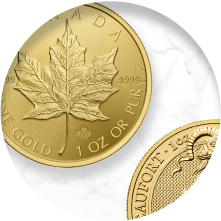

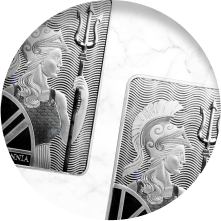
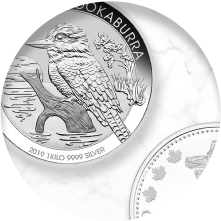
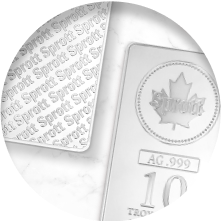

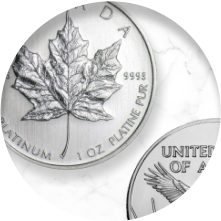

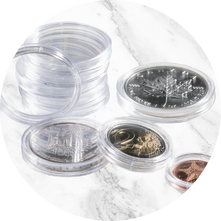
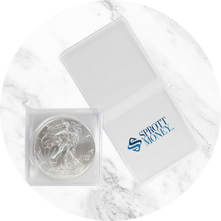



Looks like there are no comments yet.